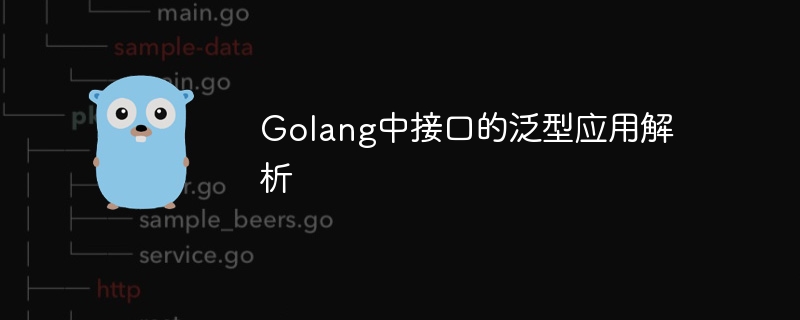

Generic application analysis of interfaces in Golang
In Golang, generics are a highly controversial topic. Since the Golang language itself does not directly support generics, developers often encounter some limitations and challenges when using interfaces. However, in the latest version of Golang, support for generics has been introduced, allowing developers to use the combination of interfaces and generics more flexibly. This article will explore how to use interfaces and generics in Golang, and analyze it through specific code examples.
Generics refers to a concept in programming languages that can use type parameters in functions, classes or interfaces to increase the flexibility and reusability of code. In Golang, one of the most common application scenarios of generics is to use generics in interfaces to accept different types of data.
In Golang, an interface is an abstract data type through which the behavior of an object can be defined. Using generics in an interface can make the interface more general and able to accept different types of data.
Let us analyze the generic application of the interface through a simple example:
package main import "fmt" //Define a generic interface type Container interface { Len() int Get(index int) interface{} } // Implement an integer slice container typeIntSliceContainer[]int func (c IntSliceContainer) Len() int { returnlen(c) } func (c IntSliceContainer) Get(index int) interface{} { return c[index] } func main() { data := IntSliceContainer{1, 2, 3} printContainer(data) } func printContainer(c Container) { for i := 0; i < c.Len(); i { fmt.Println(c.Get(i)) } }
In the above code, we define a generic interfaceContainer, which contains two methodsLen()andGet(index int) interface{}. Then we implemented an integer slice containerIntSliceContainerand received different types of data through the generic interfaceContainerin theprintContainer()function.
Generics can make the code more concise and readable, and improve the reusability of the code. However, there are also some challenges with generics in Golang, such as the impact on performance and difficulty in troubleshooting errors. Therefore, you need to consider carefully when using generics to avoid overuse.
Through the discussion in this article, we have learned about the generic application of interfaces in Golang. The introduction of generics allows developers to use interfaces more flexibly and receive different types of data. In actual development, appropriate use of generics can improve the flexibility and reusability of code, but you need to be careful not to overuse it to avoid causing performance problems. I hope this article is helpful to you, thank you for reading.
(Word count: 490 words)
The above is the detailed content of Generic application analysis of interfaces in Golang. For more information, please follow other related articles on the PHP Chinese website!




